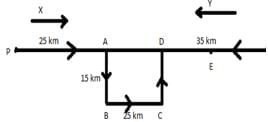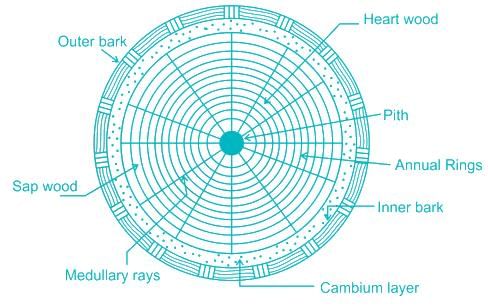MPPGCL JE Civil Mock Test - 2 - Civil Engineering (CE) MCQ
30 Questions MCQ Test - MPPGCL JE Civil Mock Test - 2
What is to be added to 40% of 900 so that the sum must be equal to 30% of 2600?
Direction: In a family, there are six members P, Q, R, S, T, U, and V are a married couple. P being the male member. S is the only son of R, who is the brother of P. T is the sister of S. Q is the daughter-in-law of U, whose husband has died.
Q. How is U related to P?
The average weight of A, B and C is 55 kg. If the average weight of A and B be 50 kg and that of B and C be 53 kg, then the weight of B is
Two buses start from the opposite points of a main road, 150 km apart. The first bus runs for 25 km and takes a turn right and runs for 15 km. It then turns left and runs for another 25 km and takes the direction back to reach the main road. In the meantime, due to a minor breakdown, the other bus has run only 35 km along the main road, what would be the distance between the two buses at this point?
The ratio (water content−plastic limit/plasticity index) for a soil mass is called
The shearing strength of a cohesion less coil depends on -
Physical properties which influence permeability are -
Directions: In question below, select the related word from the given alternatives
Joy : Delight : : Gloomy : ?
The line drawn through the points of same declination is called
The loss of pressure head for the laminar flow through pipes varies-
For a continuous floor slab supported on beam, the ratio of the end span of length and intermediate span length is-
Name the tests to find out the strength properties of a soil
In an experiment for the determination of the shrinkage limit, the following observations are taken
(a) the volume of saturated soil = 9.95 ml
(b) mass of saturated soil = 17.5 ml
(c) the volume of dry soil after shrinkage = 5.60 ml
(d) mass of dry soil after shrinkage = 11.5 ml
compute the shrinkage limit and the specific gravity of soils
To determine the liquid limit, in the flow curve, the water content is plotted on-
Concrete is unsuitable for compaction by vibration if it is-
Net sectional area of a tension member is equal to its gross section area-
When the deposits of efflorescence are more than 10 percent and less than 50 percent of the exposed areas of brick, the presence of efflorescence is classified as :
The maximum permissible shear stress tc max given in BIS: 456 – 1978 is based on-
Clumann's method assumes, the plane failure surface passing through-
The period of cleaning of a slow sand filter is usually:
The method used for the valuation of a building is:
Which of the following is examined to determine the age of timber?




















